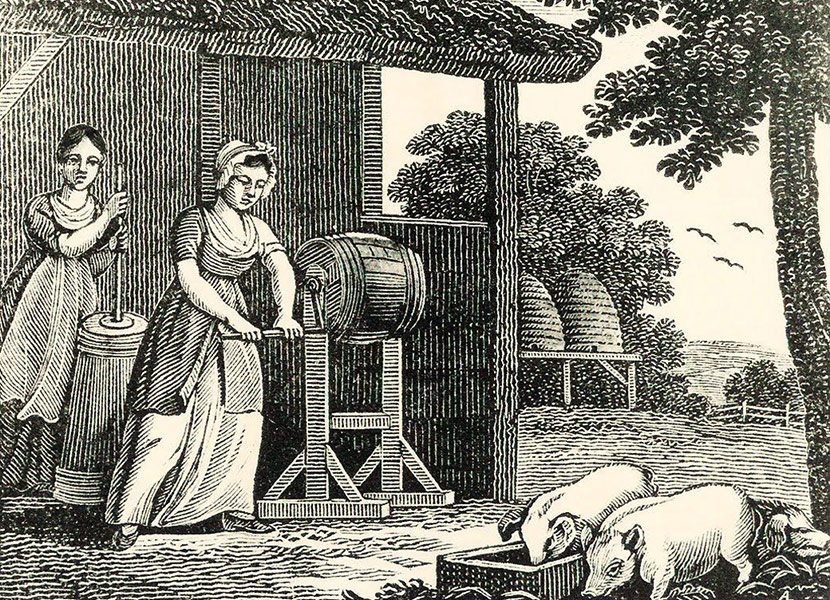
One-third of the Medicare patients who died in 2011 had 4 or more transitions within last 6 months of life. #HPM https://t.co/jn2x6tLJmg pic.twitter.com/rW55dKhFJE
— JAGS (@AGSJournal) April 4, 2017
Check out our inaugural JAGS GeriPal Podcast! JAGS, or Journal of the American Geriatrics Society, is the premier journal for aging research. We will be interviewing a JAGS author regularly as part of this series.
For the inaugural JAGS GeriPal podcast, we spoke with Shi-Yi Wang, Assistant Professor in the School of Public Health at Yale. Dr. Wang published a JAGS manuscript titled, “End-of-Life Transition Patterns of Medicare Beneficiaries.”
The @AGSJournal tweet about this article went viral. OK, it went viral in terms of a Geriatrics tweet, not Beyonce viral.
A major part of the popularity of this tweet was due to the accompanying image. The image that Dr. Wang created told the story of frequent transitions from setting to setting clearly, in a picture, rather than words. Dr. Wang talks about being inspired by Hans Rosling, whose TED talk on The Best Stats You’ve Never Seen went viral (that’s real world viral).
In a brilliant accompanying editorial, Joanne Lynn describes the reasons for these transitions: our health care system fails to support the majority of older adults with serious complex medical illness.
Instead, the United States is in the process of implementing ever-more-fragmented service delivery arrangements for Medicare beneficiaries living with progressive, eventually fatal, advanced illnesses and disabilities. Few outpatient physicians manage their hospitalized patients. New specialists in palliative care consult to settle goals of care and advise about symptom management, but they rarely provide ongoing primary care around the clock. Hospice promises to stay with the individual and family through death and bereavement—but hospice serves most enrollees only for 1 or 2 weeks. Hospice programs now often discharge very sick and disabled individuals when they live too long,[8] thereby abrogating the promise of continuity. The Program of All-Inclusive Care of the Elderly (PACE) rarely discharges participants, providing thoroughly comprehensive services to the end of life for elderly persons eligible for Medicaid and living with disabilities, but PACE serves only approximately 38,000 participants nationwide, which is a very small proportion of affected people. Outside of PACE and hospice, very sick and disabled people in their last phase of life usually see many different doctors, often in the emergency department and specialty consultation, without clear or comprehensive care plans and without the support that they and their families need.
A transcript is below, for those who prefer to read rather than listen (you’re missing out on a hack job of Peaceful Easy Feeling!)
Enjoy!
By: @AlexSmithMD
Links:
- Article: Shi-Yi Wang and colleagues End-of-Life Transition Patterns of Medicare Beneficiaries
- Editorial: Joanne Lynn A Moving Target – Medicare Beneficiaries Coming to the End of Long Lives
- TED Talk: Hans Rosling The Best Stats You’ve Never Seen
Eric: Welcome to the first GeriPal Journal of the American Geriatrics Society, or JAGS, Podcast. This is Eric Widera.
Alex: This is Alex Smith.
Eric: And for our very first GeriPal JAGS Podcast, we have invited a guest!
Alex: So we have, Shi-Yi Wang, who is Assistant Professor in the School of Public Health at Yale, and welcome to the GeriPal Podcast, Shi-Yi.
Shi-Yi: It’s my honor to be here.
Eric: We start off as always, with a song request from Alex. Do you have one, favorite band?
Shi-Yi: Either Beatles or Eagles.
Alex: Or Eagles! Okay, well I know a bit of both. We’ve done a lot of Beatles, on this show. We haven’t done any Eagles. So let’s do a little bit of Eagles here.
(Singing Peaceful Easy Feeling)
Eric: Excellent!
Alex: So, we’re talking with you about your paper in JAGS, the Journal of the American Geriatrics Society, about end-of-life care transitions patterns of Medicare beneficiaries. Would you say that end-of-life care transition patterns are peaceful or easy?
Shi-Yi: Of course not. We all know that end-of-life care, in the United States, actually, is generally very aggressive. So, that’s the reason I’m interested in, to understanding healthcare transitions and the importance of transition trajectory.
Eric: A little bit about what we know about this already, before this came out … Quoted in your introduction, you talk about Joan Teno’s study, looking at healthcare transitions just over the last decade from 2000 to 2009. While hospital deaths, and hospice use have increased, the number of healthcare transitions have significantly increased. So we’re seeing this pattern of, I think one word to use is, churn, amongst Medicare beneficiaries near the end-of-life. Is that right? Is that a good summary?
Shi-Yi: Yeah, actually, this project is motivated by Joan Teno’s paper – JAMA paper. We all know that multiple transitions have the potential for poorly coordinated care, medical errors, duplication of a diagnostic workup and the changes in the management. And that they can be burdensome for individuals and their family members and very costly to the society.
Alex: Very good. So maybe, you could start off by telling us what you did, sort of in a snapshot, big-picture view that our listeners could understand.
Shi-Yi: So we analyzed Medicare beneficiaries, or decedents in 2011. But specifically, we try to understand transition trajectories, and the national variation of the transitions, and the factors associated with multiple transitions. More excitingly, I mean, we produce sequence diagrams to visualize the sequences of healthcare transitions.
Eric: Yeah, so, I was very impressed. We’ll have a link to the article and an image of Figure 2, which was the sequence of care transitions in the last six months of a life for Medicare beneficiaries. But it’s basically, a very detailed diagram of what happens to the people if they start off at home, or home hospice, or sniff in a hospital. And you can see the flow of these individuals over time, through these multiple transitions. Do you want to give us a little bit of a summary of what we’re actually seeing with these transitions?
Shi-Yi: Okay, so, the centi-diagrams, have been used in science and engineer, for decades. Basically, the diagrams is a specific type of a flow diagram, in which the flows are shown proportionally to the flow of quantities. So we can see, patients move from home or hospital to other healthcare settings and keep moving. So we can visualize the sequences.
Eric: So, and when we’re seeing this, we’re seeing … So, it sounds like for these sequence flow diagrams, the larger the … What’s the right word? …
Alex: The area?
Eric: The larger the area, the more individuals are in that. And as it gets smaller, the less individuals are in that. Is that right?
Shi-Yi: Yes, correct. So for the picture, in that diagram, actually, we can see that 32.8% of decedents had four or more than four transitions in their last six months of life. And that the majority, actually, about 20% of decedents transition from home, first, to hospital, second, to home or skilled nursing facility, then third, back to hospital, and the fourth, another healthcare settings. I mean, 20% of them had this kind of transition sequence and I am surprised that there are so many people who went through this terrible care.
Eric: And, you know when we’re thinking about transitions in care, do we have any data to suggest that multiple transitions are associated with poor quality of care, poor satisfaction rated by patients? Like, how do we know it’s potentially poor quality care?
Shi-Yi: It’s a good point. So far, we don’t have the data to directly link healthcare transitions and patient’s satisfaction, quality of care, et cetera. This is one of the limitations because some transitions actually are necessary. But, such profound, or so many transitions in the end-of-life does indicate recommended care during this important period of life.
Alex: And there’s some variability it looks like too. It depends a little bit on what state you happen to live in. Is that right?
Shi-Yi: Yeah. There is substantial variation in number of transitions across states. From a low of 1.8 in Alaska, to a high of a 3.1 in New Jersey.
Eric: Oh! Don’t want to live in New Jersey.
Alex: Just looking at these, you know, state by state, mean number of transitions, I was trying to identify a pattern. I’ll just read for our listeners here it’d be states with the lowest number of transitions, the sort of top five lowest. We have: Alaska, Utah, Hawaii, Idaho, Montana.
So much more rural states, generally.
Eric: That definitely seems to be a pattern.
Alex: There seems to be some pattern. And then the other end of the spectrum, you have, top five highest number of transitions: New Jersey, Illinois, Mississippi, Arkansas, Louisiana, and West Virgina.
So there’s some rural states in there as well. So there seems to be some pattern of rural states having fewer transitions. But there are also some states that are sort of more rural that have a high number of transitions. Florida, I see, is the next one on the list, that would be number six.
Shi-Yi: Yeah, and actually, Oregon is one of the best states, because I believe it is the sixth lowest state in terms of mean number of care transitions. So I mean, yeah of course, patients in rural areas were less likely to have multiple transitions because the access to healthcare systems … Yeah, that’s for sure.
Alex: It’s interesting that the rural states that have high numbers of care transitions tend to be located in the south eastern United States. You’re looking at Mississippi, Louisiana, for example. So it does seem to be a pattern there as well. You know it seems there was another major point of this article about hospice use. And early hospice use in particular. Could you talk about the Shi-Yi?
Shi-Yi: Yeah, perhaps I can take one step back. I would say one is hospital palliative care program. I mean, I think it’s important, I believe, Sean has a podcast this month or … ?
Alex: Yeah, we had a Sean Morris on our podcast a couple weeks ago.
Eric: Yup.
Shi-Yi: Yeah. So basically, I think it’s very important that hospital palliative care program can have an impact on end-of-life care transitions if the program can descend their care to more patients in hospitals. Because most of the patients had an experience with hospitalization before they die. So that’s one thing that I want to emphasize.
And return back to your question that I believe that hospice use might be underutilized in some areas because in the states with multiple transitions, they tend to receive hospital care, but they were not referred to hospice early enough. And actually Joan Teno’s group has demonstrated that hospice use in a very short period of time, might not be beneficial for beneficiaries because they still receive a great end-of-life care until to the very end-of-life, then they were put into the hospice. So, it’s important to have a hospice service earlier so that we can prevent multiple care transitions.
Eric: So it looks like from your article, is that, you know, one big difference between let’s say Utah, a low transition state, to New Jersey, a high transition state, is that hospice use looked like it was much more common earlier on, 90 days, 150 days, 180 days before death versus New Jersey, where it was relatively infrequently used. Am I seeing that correctly?
Shi-Yi: Yes. Of course, if we only looked at the last day, I mean the date of death, it’s about 40% to 55%. But I would argue that it’s not just only the hospice utilization, it’s also the timing of hospice utilization. We can see across the time horizon, the proportion of patients who used hospice in Utah was higher than that in New Jersey. So I think that’s the key.
Eric: Could that also be … I mean, I can imagine that could be explained by both systems factors, and also patient preferences. Do we have any indication from this study on what causes these differences amongst states?
Shi-Yi: No. I mean, unfortunately, we don’t have patient preferences, and they actually … We also think this is an urgent future research to understand patients, first, preferences as well as the care transition and the quality of care or patient satisfaction. And I also think that Utah may also have a stronger family bond so that family members can help or can take care of the patients. May be also the reason why Utah can have a lower transition numbers.
Eric: Yeah, that actually reminds me too of … We just had Michael Fratkin on to talk about delivering palliative care in rural America. And some of the differences that we see in urban America. And I wonder how much that I learned from Michael and that podcast also applies to this study, looking at the differences between what we’re seeing rural versus more urban areas as far as multiple transitions. And that could be in patient factors, it could be other issues around systems of care.
Alex: It also reminds me that, you know, even within these states, there’s tremendous heterogeneity. So that, you know, within a big state like, California, for example, there are major urban centers and then there are vast swathes of California that are very rural. And that’s true for a number of states on this list.
Eric: Yeah, and I think back again, Joan Teno’s work, how even within a city, hospitals can be right next to each other and even use … One can have very high versus very low utilization of things like peg tubes for advanced dementia.
Alex: So, what’s next for you as far as this research?
Shi-Yi: So, we would like to know patients preferences especially for those who were enrolled in hospice. So I mean the CMS right now has the CAPS hospice survey. So potentially, we can understand more about patients preferences as well as family members preferences in hospice enrollment, yeah.
Alex: And what’s your major take home finding that we can take away from this? Not just in terms of future research. But is there anything that we can take away as clinicians who are practicing or in terms of change to the healthcare system?
Shi-Yi: I think we can use Utah as a benchmark, so that other states … Physicians in other states should consider that try to avoid aggressive end-of-life care and also understand patients preferences and to have some kind of health goals of care or health goal care plans for individual patients. Also, we think hospice utilization as well as palliative care programs should extend to help patients to make their end-of-life care treatment decisions. Finally, I think data visualization will help researchers, patients, and clinicians to communicate the potential or the care transition trajectories. I think that’s all.
Alex: That’s terrific. And I think that the sequence diagram, the sequence of care transitions actually, is brilliant. It’s a brilliant image. And it’s so terrific that you’ve brought that methodology into the healthcare field and health policy. Thank you.
Eric: Yeah, and I love the idea of visualizing data in ways that brings in new insights and it makes it much more easy to understand what all this means instead of just a table.
Alex: Right, and this … You tweeted this through the Journal of the American Geriatrics Society account which we should note is, @AGSJournal. And that, that tweet went, you know, viral. So viral for Geriatrics, okay, is not thousands of retweets, it’s you know, tens, twenties, thirties, forties. That’s viral. We count that as viral. And I think part of the reason it went viral, is because the picture told the message so clearly. And it drew people in in ways that a table would not have.
Shi-Yi: Yeah, I mean, actually, it’s inspired by Hans Rosling. He has a great TED Talk before. Unfortunately he died in February. I believe you all … You have all seen his talk about global health, that kind of bubble. I think that’s a fantastic way to show results and to communicate with others.
Alex: We can put a link to his TED Talk below.
Eric: Okay Alex, do you want to end us off with-
Alex: Yes-
Eric: A little more?
Alex: Happy to end with a little more Eagles. Shi-Yi, thank you so much for being part of the GeriPal Podcast today. We really appreciate you joining us.
(Singing)
Produced by: Sean Lang-Brown



